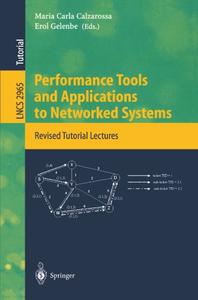Maria Carla Calzarossa, Erol Gelenbe, "Performance Tools and Applications to Networked Systems: Revised Tutorial Lectures"
2004 | pages: 393 | ISBN: 3540219455 | PDF | 6,7 mb
2004 | pages: 393 | ISBN: 3540219455 | PDF | 6,7 mb
This volume is dedicated largely to the performance-oriented design of modern computernetworks,bothwiredandwireless. ItistheconsequenceoftheTutorial Session which was held on 12th October 2003, preceeding the IEEE Computer Society's Symposium on Modeling, Analysis and Simulation of Computer and Telecommunication Systems, held in Orlando, Florida. In addition to the core tutorialpresentations,whichcoveredbothadvancesinnetworkqualityofservice (QoS) and in performance evaluation methodology, we felt that it would be useful to assemble a volume in the Lecture Notes in Computer Science series which would also include speci?c application areas of performance modeling and measurements. Thus the current volume includes three parts: - a ?rst part that speci?cally addresses performance and QoS of modern wired and wireless networks; - a second one that discusses current advances in performance modeling and simulation; and - a ?nal part that addresses other speci?c applications of these methodologies. The network-oriented portion of the volume itself comprises three complem- tary topics: - a ?rst group of chapters deals with novel designs and new issues related to broad-based network performance and QoS, without limitations concerning the connection technologies that are being used; - a second group addresses the wireless context; and - a ?nal grouping of contributions considers the topic of wireless ad hoc n- worksmorespeci?cally. The part of the volume dealing with methodologies discusses the software s- ci?cation of models, the use of certain formalisms such as Petri nets, and some recent advances in simulation. Finally, the third part of the volume discusses other performance applications related to scheduling and to speci?c architec- res.
My Link



